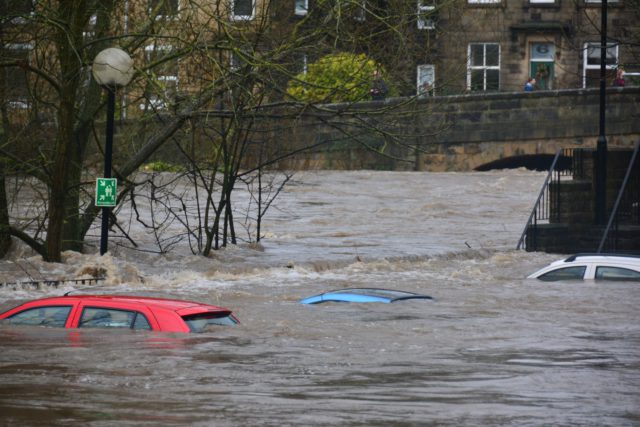With the compounding events of 2020 testing the resilience of crisis response teams worldwide, long-term crisis fatigue and critical event burnout is becoming one of our next major concerns.
“Leaders don’t get immunity from stress and strain and when you’ve got to put on a brave face, it comes with an emotional labor cost.”

With ongoing, multiple critical event management expected to be the new norm heading well into 2021, crisis response teams need to be able to respond with agility and ease to minimize crisis fatigue.
The solution? Third generation SaaS digital toolsets can amplify critical event response capabilities and give back much needed resources to your finite decision making team.
Crisis Fatigue – What, How, and Can It Be Avoided?
Recognized as the mental, physical, and emotional effect of long-term crisis management, crisis fatigue is the result of operating from a place of high stress during a time-critical event for an extended period of time.
Resulting in feelings of overwhelm, declining mental health, and limited decision-making capabilities, the traditional critical event management approach—whereby teams rely on few key personnel to manage a short-term, one-off event—can no longer support the multiple, long-term crisis environment of 2020-21.
When exploring the very real effects of critical event burnout during an expert-led panel with Catalyst Technologies, industry leaders from Australian Psychological Services and RiskLogic highlighted several key takeaways that can minimize the risk of crisis fatigue:
1. Empathic leadership. David Burroughs from Australian Psychological Services noted that the best 2020 leadership styles have proven to be those who are willing to demonstrate voluntary vulnerability and how the ongoing pandemic has affected every part of the organization.
“Understanding that our leaders aren’t going to get out of this unscathed is important.”
2. Rest and recovery. Brad Law from RiskLogic highlighted the importance of having bench strength and organizational depth when managing ongoing events. “Don’t overstretch your good people.”
3. Job design. Both David and Brad confirmed the need for role clarity during critical events as a means of streamlining communication, matching capabilities with expectations, and sharing critical tasks to minimize crisis fatigue.
4. Psychological agility. Now functioning in an ongoing, ambiguous crisis environment, one of the key skillsets to take into 2021 will be the ability to navigate long-term, simultaneous critical events with flexibility, clarity, and a slow-burn approach.
With expectations of the ongoing critical events from 2020 expected to continue into 2021, how can crisis response teams enhance their capabilities to ease the burden on their finite people? The solution may be a lot more accessible—and automated—than you might think.
Digitalizing Response Plans to Minimize the Risk of Crisis Fatigue
Ready to take back some of the burden burning out your crisis response team? Using third generation SaaS technology, organizations worldwide can automate their threat monitoring system, integrate a critical event management platform with everyday team communications, and trigger pre-designated critical event workflows.
 Need to breathe a little easier heading into the out-of-office season? Check out how this digitalized solution could work for you.
Need to breathe a little easier heading into the out-of-office season? Check out how this digitalized solution could work for you.
1. Background Monitoring for Potential Events. By integrating an active threat monitoring system into your response program, organizations can proactively (and silently) monitor for potential events. Alerting crisis response teams in the face of an escalating threat, key personnel are kept up-to-date with streamlined intelligence letting decision makers know if subsequent actions should be taken to mitigate risk.
By offloading the need for ongoing, manual data monitoring, the crisis response team can step away from the intelligence stream knowing contextualized information will be delivered and ready at hand.
2. Integrated Communications. Connecting key decision makers with remote project teams has never been more important. With whole organizations working from home during COVID-19 and increased numbers of remote teams working during the out-of-office season, the ability to connect with and communicate key messages to both site-based and distributed people is critical during an escalating event.
3. By using third generation SaaS technology to create an integrated threat monitoring and communication platform, crisis response trams can deliver quick and consistent messages to their remote teams.
From SMS polling options to delivering stay-at-home orders in the face of an unfolding threat, third generation SaaS technology makes it possible to use everyday communication apps to deliver key messages thereby minimizing the risk of software and alert fatigue.
4. Triggered Workflows. Need your people to act and act now? Having set up an integrated system to monitor for potential threats and send automated messages to your distributed team, third generation SaaS technology makes it possible for pre-designated workflows to trigger in the face of an escalating event.
From site-based impact assessments to collaborative working groups, a critical event management system that supports whole-organization contributions can reduce the burden placed on a finite crisis response team.
Knowing that 2020-21 events are expected to continue well into the future, third generation SaaS technology makes it possible to operationalize a democratic approach to critical events and reserve your A-team for when they’re needed the most.
—
Now at the tail end of 2020, many organizations can see that crisis burnout and fatigue is real. No longer responding to time-limited, one-off crisis events, leadership teams need to increase their response capabilities to lower the risk of key personnel fatigue.
With third generation SaaS technology toolsets available to digitalize response programs, critical event teams can lower the risk of running their best people into the ground and build a better, more dynamic crisis response.
Interested in automating your crisis response plan? All registered iluminr users can start mapping their key asset locations and start receiving potential threat alerts today.
If you’re looking to take some time away from the office during the holiday season—but don’t want to leave your people and places unprepared—sign up to iluminr to get started and build yourself a better peace of mind.














